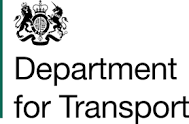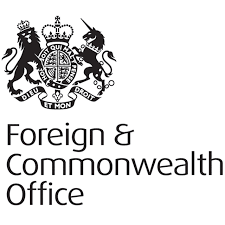PRESS RELEASE : People First Zone at heart of plans to transform Glasgow city centre
The press release issued by Glasgow City Council on 1 August 2022.
A People First Zone where people would have priority over vehicles has been placed at the heart of plans to transform Glasgow city centre.
The proposal for a People First Zone intends to create an area of high-quality public realm in the city centre that encourages walking, wheeling and cycling while still providing access for disabled drivers, pick up and drop off at key transport hubs and business deliveries.
Proposed as part of an overall City Centre Transformation Plan (CCTP), the People First Zone would cover an area bounded by Hope Street, Cowcaddens Road, North Hanover Street, Glassford Street and Howard Street. The zone would also tie in with the proposed masterplans for the Buchanan Galleries and St Enoch Centre and is designed to ensure drivers can still access the multi-storey car parks that circle the city centre.
Within the zone, crossing points would ensure pedestrians have less distance and more time to cross the road in an environment that is quieter and cleaner. Rebalancing how street space is used in the city centre would also allow for a growth in civic spaces, pocket parks, parklets and street cafes.
The overall CCTP has now been laid out for consultation with views to be gathered from the public over the next six weeks. With a focus on creating a people-friendly city centre transport network, the CCTP is expected to support the economic vibrancy of the city centre, help Glasgow’s transition to net-zero, improve residents’ health, well-being and quality of life while also offering an enhanced experience for visitors.
Councillor Susan Aitken, Leader of Glasgow City Council, believes the CCTP is crucial to the future of Glasgow city centre at a time when cities the world over are still grappling with transformation in shopping habits created by the internet and the impact of the covid pandemic.
Councillor Aitken said: “We want our city centre to reach its true potential as a place where people want to live, work and visit.
“Cities all around the world are still coming to terms with the effects of on-line shopping and the shock of covid. But cities everywhere are successfully transforming their centres to become more attractive, liveable spaces and Glasgow should be no different.
“We can move away from an area which is car-dominated to one that is healthier for all who use it and which will contribute to our active travel and net-zero targets. Much less traffic, but better connectivity, would deliver real benefits for city businesses, as well as residents and visitors.”
“This is a chance for Glaswegians to imagine a centre that is focused on the needs of people and is environmentally-friendly. The city centre would become an urban heart people want to spend time in, rather than just pass through. I urge people to share their views through this consultation as that will help shape our plans for the future of our city centre.”
The public consultation on the draft CCTP will include an online survey to participate in at: connectingcommunities@glasgow.gov.uk and a number of online / in-person sessions for a range of city centre groups and organisations.
The CCTP is an update of the existing City Centre Transport Strategy and will play a key role in ensuring that transport plans for the city centre help deliver the aims shared by other strategies to ensure that the area is attractive for residents, workers, students, businesses, visitors and investors. More detail on the draft CCTP is available at: https://www.glasgow.gov.uk/city-centre-transformation-plan.
The CCTP has been supported by Sustrans funding, with other similarly supported transport strategies also under current development being the Active Travel Strategy and the Liveable Neighbourhoods Plan.
Karen McGregor, Portfolio Director for Sustrans said: “The CCTP will be an absolute game-changer for walking, wheeling, and cycling in Glasgow, making our streets safer, cleaner and more enjoyable for everyone. The plan also neatly links in with a number of other high-profile projects we’re delivering in partnership with Glasgow City Council, including improved active travel routes from Govanhill in the south and from Woodside in the north, creating a truly active and accessible network across the city.”
After consultation and engagement with a wide range of groups in 2020 and 2021, an emerging purpose for the City Centre Transformation Plan developed: the provision of a clear framework for transport decision-making in Glasgow city centre, with the following key aims:
· The re-allocation of road space in the city centre for active travel and green infrastructure;
· The delivery of improved public transport and support/encourage a shift to more sustainable modes, particularly walking, cycling and public transport, with a target of 80% of peak-time travel to the city centre being made by active travel and public transport by 2030;
· Improved access for the mobility-impaired;
· Seeking to achieve a 30% reduction in peak-hour private car traffic in the city centre by 2030;
· The delivery of improvements for servicing (e.g. goods, deliveries and waste collection) to improve the vitality of Glasgow city centre;
· Supporting a doubling of Glasgow city centre’s population by 2035; and
· Supporting Glasgow’s aim to be carbon neutral by 2030.
Further aims for the CCTP are a more accessible city centre, where people with limited or restricted mobility can enjoy safe and ready access; and a place where walking should be the main way of travelling around, and where more people choose to cycle into and around it. Other aims for the city centre include cleaner, greener and less congested streets; efficient, reliable and integrated public transport; and a place where goods are moved and delivered efficiently and sustainably.
A number of confirmed and aspirational projects will help deliver the CCTP’s aims, including George Square and the wider Avenues and Avenues Plus programme; the People First Zone; the Low Emission Zone; the transformation of the Broomielaw and Clyde Waterfront; people-friendly streets; and the proposed Mitchell Plaza and Charing Cross scheme.
The CCTP aligns with other key strategies such as the Connectivity Commission, the City Centre Strategic Development Framework, Glasgow’s Climate Plan, the City Centre Living Strategy Vision 2035 and the District Regeneration Frameworks.
After the consultation, the CCTP will come back for final committee consideration in late 2022.



